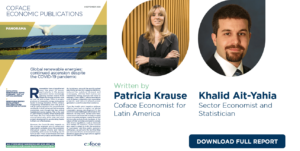Integrating renewables into the grid is no longer optional for governments worldwide.
In both advanced and emerging economies – even if they face strong headwinds in some regions. This is the case in Latin America notably, where hydropower had been the leading renewable electricity source historically, while solar and wind project development is accelerating thanks to their cost effectiveness.
However, the impact of the COVID-19 crisis on this energy segment are of paramount importance. The pandemic has disrupted supply chains and labour availability, while reducing access to funding.
These recent trends have hurt both already approved projects and future ones. As lockdowns around the world pushed electricity prices into negative territory, induced by subdued demand and oversupply, utilities that mainly use traditional energy sources will have to manage a “new reality”, where innovations such as battery integration into renewables projects and decentralized power generation could threaten their existence.

The health crisis’ negative spillover effects have had an impact on global renewable energy development in the short-term and challenges will remain in the medium- to long-term. At the same time, some sectors are expected to keep on using more renewable energies, mainly those that intrinsically pollute more because of the nature of their activities and need to comply with stricter regulations, such as chemicals and metals. These sectors also need to adapt to chaging customers’ willingness and public opinion, as well as to the fact that they are more sensitive to environmental issues, therefore aggravating legal actions against them on the matter.
